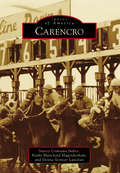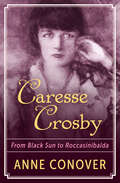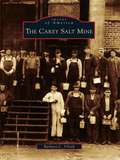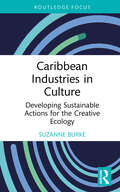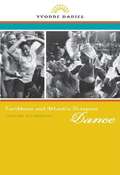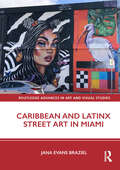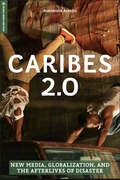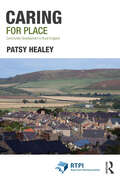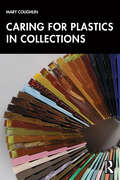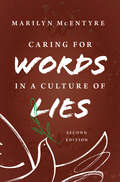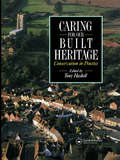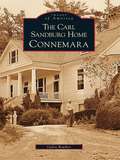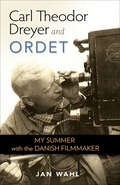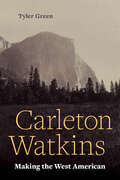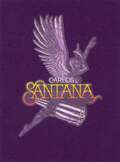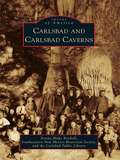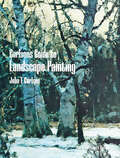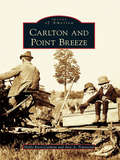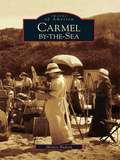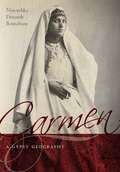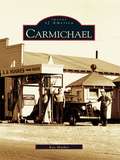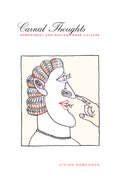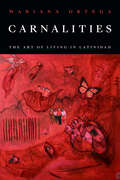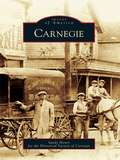- Table View
- List View
Carencro
by Stacey Comeaux Judice Donna Sonnier Latiolais Kathy Blanchard HigginbothamThe city of Carencro is nestled in the heart of Cajun country in southern Louisiana. The earliest date in the records of the St. Pierre Genealogical Society is 1765, when exiled Acadians settled in the Attakapas District in an area then known as the Carencro Prairie. Many arrived under a cattle agreement, but settlers also desired to farm the land of the prairie. From the beginning, the area has been rich in faith, strong in personality, and successful from years of surviving the trials of life. The prairie was later called St. Pierre, the French name for St. Peter. Today, St. Peter's Catholic Church sits in the hub of the city, as it has for decades. As the years have passed, Carencro has stayed true to its founding fathers. It is a place that constantly grew and embraced change while staying steadfast in the faith that was brought by the first settlers.
Caresse Crosby: From Black Sun to Roccasinibalda
by Anne ConoverAn exciting figure among the avant-garde of Paris in the 1920s, Caresse Crosby is little known today. She and her husband Harry founded the Black Sun Press, early publishers of such titans as Ernest Hemingway, F. Scott Fitzgerald, D. H. Lawrence, Ezra Pound, and James Joyce. This flamboyant chapter of her life ended when Harry and his lover shot themselves in a sensational suicide pact. Caresse was thirty-six. Ever resilient, Caresse lived and loved another forty years, consorted with some two hundred lovers, married again, and established a refuge in Virginia for uprooted artists like Salvador Dali and Henry Miller. In response to the atom bomb, she declared herself a citizen-of-the-world and organized Women Against War, furthering a worldwide peace movement. In her later years, she bought a feudal castle in Italy—“Castello de Rocca Sinibalda”—to provide a home for artists and pacifists. She died there in 1970.
Carey Salt Mine, The
by Barbara C. UlrichIn 1923, Kansas governor Johnathan Davis traveled to Hutchinson to dedicate Emerson Carey's new rock salt mine whose shaft provided access to an ancient salt bed 650 feet under the earth's surface. The Carey Salt Mine, advertised as "the most modern in the world," served as a companion to Carey's already-existing evaporation plants. Miners used the newest technology to blast and crush the mineral into gravel and haul it to the surface to provide rock salt for livestock, industries, and roads. Throughout the 20th century, thousands visited Carey's mining operations. Ever since the day Governor Davis presided over the opening ceremony, the Carey Salt Mine has served as a landmark for Hutchinson and helped shape its identity as "the Salt City."
Caribbean Industries in Culture: Developing Sustainable Actions for the Creative Ecology (Routledge Focus on the Global Creative Economy)
by Suzanne BurkeAnalysing the factors affecting the sustainable development of the Caribbean cultural industry, this concise volume explores how creatives operate within the cultural ecology of the region and the diverse range of tactics they use to mediate state and global policies to define cultural production and consumption in post-colonial small island states.Despite 30 years of government intervention, the cultural industry sector has not consistently performed as an agent of socio-economic change. In that sense, it has not delivered on its promise to diversify the small island economies in the region. This book aims to map how Caribbean creative activity connects and traverses the prickly domains of cultural policy, cultural institutions, cultural entrepreneurship and artistic practice to open new vistas of understanding cultural production and to provide a more nuanced reading of the cultural life of the Caribbean.This innovative and practical study will be of interest not only to scholars and practitioners interested and working in the Caribbean but also to researchers and advanced students in cultural policy, as well as to policy makers and other researchers working in cultural policy development, arts practice and creative entrepreneurship within small island states.
Caribbean and Atlantic Diaspora Dance: Igniting Citizenship
by Yvonne DanielIn Caribbean and Atlantic Diaspora Dance: Igniting Citizenship, Yvonne Daniel provides a sweeping cultural and historical examination of diaspora dance genres. In discussing relationships among African, Caribbean, and other diasporic dances, Daniel investigates social dances brought to the islands by Europeans and Africans, including quadrilles and drum-dances as well as popular dances that followed, such as Carnival parading, Pan-Caribbean danzas,rumba, merengue, mambo, reggae, and zouk. Daniel reviews sacred dance and closely documents combat dances, such as Martinican ladja, Trinidadian kalinda, and Cuban juego de maní. In drawing on scores of performers and consultants from the region as well as on her own professional dance experience and acumen, Daniel adeptly places Caribbean dance in the context of cultural and economic globalization, connecting local practices to transnational and global processes and emphasizing the important role of dance in critical regional tourism.
Caribbean and Latinx Street Art in Miami (Routledge Advances in Art and Visual Studies)
by Jana Evans BrazielThis study focuses on street art and large-scale murals in metropolitan Miami/Dade County, while also foregrounding the diasporic and aesthetic interventions made by migrant and second-generation artists whose families hail from the Caribbean and Latin America. Jana Evans Braziel argues that Caribbean and Latinx street artists define and visually mark the city of Miami as a diasporic, transnational urban space. These artists also help define Miami as a cosmopolitan city, yet one that is also a distinctly Caribbean and Latinx urban space, and simultaneously resist but also (at times reluctantly) participate in the forces of gentrification and urban re/development, particularly through the myriad and complex ways in which street art contributes to city branding and art tourism. The book will be of interest to scholars working in art history, urban studies, American studies, and Latin American/Caribbean studies.
Caribes 2.0: New Media, Globalization, and the Afterlives of Disaster (Global Media and Race)
by Jossianna ArroyoIn Caribes 2.0, author Jossianna Arroyo looks at the Caribbean mediasphere in the twenty-first century. Arroyo argues that we have seen a return to tropes such as blackface, brownface, cultural and ethnic stereotypes, and violent representations of the poor, the marginalized, and the racialized. Caribes 2.0 looks at these tropes as well as the work of writers, vloggers, performers, and photographers that have become media figures or have used new media platforms to promote their work and examines how they are challenging and negotiating these media representations. It analyzes contemporary Caribbean cultures to discuss, taste, guides, and actions (social and virtual) that shape Caribbean global communities today. Departing from Edouard Glissant’s insight that “Caribbean reality might not be accessed by remote control” the book considers what types of political and social agencies are created by mediation. Caribes 2.0 deviates from these historical-globalized views of subjected, colonized Caribbean bodies, and their material conditions, to examine the relationship between the local and the global in contemporary Caribbean cultures, and the role that media is playing in the invisibility or hyper-visibilty of Caribbean cultures in the islands and the U.S. diaspora.
Caring for Place: Community Development in Rural England (ISSN)
by Patsy HealeyThis book draws on preeminent planning theorist Patsy Healey’s personal experiences as a resident of a small rural town in England, to explore what place and community mean in a particular context, and how different initiatives struggle to get a stake in the wider governance relations while maintaining their own focus and ways of working. Throughout the book, Healey assesses the public value generated by community initiatives and the impact of such activity on wider governance dynamics.Healey explores the power which small communities are able to mobilise through self-organisation and grassroots activism. Through the lens of Wooler and Glendale as a micro-society, the book centres on a community experiencing an economic and demographic transition. It focuses on three initiatives developed and led by local people – a small community development trust, an informal attentionmobilising network, and a Neighbourhood Plan project which uses an opportunity provided within the formal planning system. It examines how, in such civil society activism, people came together to promote local development in a place and community neglected by the dominant political economy.The book details the power and force of community initiative and its potential for transforming both the future possibilities for the place and community itself, as well as wider governance relations. Overall, it seeks to enrich academic and policy discussion about how the relations between formal government and civil society energy could evolve in more productive and progressive directions.
Caring for Place: Community Development in Rural England (RTPI Library Series)
by Patsy HealeyThis book draws on preeminent planning theorist Patsy Healey’s personal experiences as a resident of a small rural town in England, to explore what place and community mean in a particular context, and how different initiatives struggle to get a stake in the wider governance relations while maintaining their own focus and ways of working. Throughout the book, Healey assesses the public value generated by community initiatives and the impact of such activity on wider governance dynamics. Healey explores the power which small communities are able to mobilise through self-organisation and grassroots activism. Through the lens of Wooler and Glendale as a micro-society, the book centres on a community experiencing an economic and demographic transition. It focuses on three initiatives developed and led by local people – a small community development trust, an informal attentionmobilising network, and a Neighbourhood Plan project which uses an opportunity provided within the formal planning system. It examines how, in such civil society activism, people came together to promote local development in a place and community neglected by the dominant political economy. The book details the power and force of community initiative and its potential for transforming both the future possibilities for the place and community itself, as well as wider governance relations. Overall, it seeks to enrich academic and policy discussion about how the relations between formal government and civil society energy could evolve in more productive and progressive directions.
Caring for Plastics in Collections
by Mary CoughlinCaring for Plastics in Collections presents basic knowledge of plastics in an accessible way and empowers readers to determine the best approach for care, taking into account the resources at their institution and the needs of their specific collection.Drawing on the author’s 20 years of experience working as an Objects Conservator, the book defines what a plastic is; which plastics are most worrisome in collections and why; and how you can identify plastics, monitor them, and mitigate issues. Clarifying that there are guidelines that all plastics will benefit from, Coughlin outlines a gradual, consistent approach to care that is supplemented by 25 case studies from 10 institutions. Knowing that collection teams are too frequently understaffed and funds are often limited, the book approaches the care of plastics from both preventive conservation and collection management with a focus on low- cost, accessible options for monitoring potential degradation products; the use of readily available materials and resources; tips for designing condition surveys; and using existing database content to flag plastics that may pose a collection risk. In this way, collection stewards, such as collection managers, registrars, curators, archivists, and anyone tasked with caring for collections containing plastics, will be poised to make more informed decisions about storage, display, and loans.Caring for Plastics in Collections is an essential resource for professionals working in a range of institutions around the globe, including galleries, libraries, archives, historic houses, and museums.
Caring for Words in a Culture of Lies, 2nd ed
by Marilyn McEntyreWith the pervasiveness of vitriol and dishonesty today, language needs to be revived and restored. In Caring for Words in a Culture of Lies, Marilyn McEntyre exposes the commercial and political forces that affect public discourse in American culture and counters with twelve constructive &“strategies of stewardship&”—such as challenging lies (including widely tolerated forms of deception and spin), fostering the art of conversation, and encouraging playfulness and prayerfulness in writing and speaking. The second edition of this timely and timeless book includes updated cultural references and questions for reflection and discussion at the end, allowing a new generation of readers to apply McEntyre&’s wisdom in a world that struggles with truth and graceful language more than ever before.
Caring for our Built Heritage: Conservation in practice: a review of conservation schemes carried out by County Councils and National Park Authorities in England and Wales in association with District Councils and other agencies
by Tony HaskellConservation is now a major part of planners', surveyors' and architects' work load. This review of recent conservation schemes carried out by the County Councils in England and Wales will provide a unique and indispensable reference book for professionals in the construction industry embarking on 'heritage' work. Using detailed and highly-illustrated case studies, the book documents over 100 schemes from industrial archaeology to historic parks.
Carl Sandburg Home: Connemara, The
by Galen ReutherThe story of North Carolina's Carl Sandburg Home, "Connemara," began in the early 19th century when Christopher Gustavus Memminger, noted lawyer and first secretary of the Confederate treasury, built "Rock Hill" as his summer home. After Memminger's death, the property was owned by William Gregg Jr., son of textile giant William Gregg, and later by Ellison Adger Smyth, dean of the Southern textile industry, who renamed it Connemara. Pulitzer Prize-winning author Carl Sandburg and his family purchased the property in 1945 and then lived there for 22 years. Connemara is a National Historic Site run by the National Park Service. It welcomes over 100,000 guests per year to tour, learn, and enjoy the house, barns, and hiking trails.
Carl Theodor Dreyer and Ordet: My Summer with the Danish Filmmaker (Screen Classics)
by Jan WahlThis illustrated memoir shares a rare inside look at the legendary director’s process and vision during the filming of his award-winning masterpiece.Danish director Carl Theodor Dreyer is considered one of the most influential filmmakers in cinematic history. His 1955 film Ordet (The World) won numerous prizes, including the Venice Film Festival’s Golden Lion. In 1954, Dreyer invited young film student Jan Wahl to accompany him during this classic work.This captivating account of Wahl's time with the director is based on Wahl's daily journal and transcriptions of his conversations with Dreyer. Offering a glimpse into the filmmaker's world, Wahl fashions a portrait of Dreyer as a man, mentor, friend, and director. Wahl's detailed account is supplemented by exquisite photos of the filming and by selections from Dreyer's papers, including his notes on film style, his introduction for the actors before the filming of Ordet, and a visionary lecture he delivered at Edinburgh.
Carleton Watkins: Making the West American
by Tyler Green"[A] fascinating and indispensable book."—Christopher Knight, Los Angeles TimesBest Books of 2018—The Guardian Gold Medal for Contribution to Publishing, 2019 California Book Awards Carleton Watkins (1829–1916) is widely considered the greatest American photographer of the nineteenth century and arguably the most influential artist of his era. He is best known for his pictures of Yosemite Valley and the nearby Mariposa Grove of giant sequoias. Watkins made his first trip to Yosemite Valley and Mariposa Grove in 1861 just as the Civil War was beginning. His photographs of Yosemite were exhibited in New York for the first time in 1862, as news of the Union’s disastrous defeat at Fredericksburg was landing in newspapers and while the Matthew Brady Studio’s horrific photographs of Antietam were on view. Watkins’s work tied the West to Northern cultural traditions and played a key role in pledging the once-wavering West to Union. Motivated by Watkins’s pictures, Congress would pass legislation, signed by Abraham Lincoln, that preserved Yosemite as the prototypical "national park," the first such act of landscape preservation in the world. Carleton Watkins: Making the West American includes the first history of the birth of the national park concept since pioneering environmental historian Hans Huth’s landmark 1948 "Yosemite: The Story of an Idea." Watkins’s photographs helped shape America’s idea of the West, and helped make the West a full participant in the nation. His pictures of California, Oregon, and Nevada, as well as modern-day Washington, Utah, and Arizona, not only introduced entire landscapes to America but were important to the development of American business, finance, agriculture, government policy, and science. Watkins’s clients, customers, and friends were a veritable "who’s who" of America’s Gilded Age, and his connections with notable figures such as Collis P. Huntington, John and Jessie Benton Frémont, Eadweard Muybridge, Frederick Billings, John Muir, Albert Bierstadt, and Asa Gray reveal how the Gilded Age helped make today’s America. Drawing on recent scholarship and fresh archival discoveries, Tyler Green reveals how an artist didn’t just reflect his time, but acted as an agent of influence. This telling of Watkins’s story will fascinate anyone interested in American history; the West; and how art and artists impacted the development of American ideas, industry, landscape, conservation, and politics.
Carlos Santana: The Illustrated Story of Santana’s Musical Journey
by Jeff TamarkinA Simon & Schuster eBook. Simon & Schuster has a great book for every reader.
Carlsbad and Carlsbad Caverns
by Carlsbad Public Library Donna Blake Birchell The Southeastern New Mexico Historical SocietyCreated by the visionary Charles B. Eddy, Carlsbad rose from the humble beginnings of a tent city to become a vital community on the banks of the Pecos River. One of the largest irrigation projects known at that time made the transformation possible. The Carlsbad Caverns, discovered by James Larkin White and documented by local photographer Ray V. Davis, introduced the world to the wonders that lay beneath the desert surface. World War II saw Carlsbad members of the 200th and 515th Coast Artillery units being thrown into the midst of the Bataan Death March. With the discovery of a large deposit of potash east of town, agriculture flourished nationwide and prosperity returned to the town. As the country moved into the nuclear age, Carlsbad once again played a significant role. The detonation of the Gnome Project in 1961 and the Waste Isolation Pilot Plant of the present day have provided the country with vital knowledge and nuclear waste storage.
Carlson's Guide to Landscape Painting (Dover Art Instruction)
by John F. CarlsonWritten by a famous American painter and teacher, whose landscapes are found in many of the world's most noted museums, this book is known as one of the art students' most helpful guides. It provides a wealth of advice on the choice of subject; it tells what to look for and aim for, and explains the mysteries of color, atmospheric conditions, and other phenomena to be found in nature. Through his profound understanding of the physical nature of landscapes and his highly developed artistic sense, John Carlson is able to explain both the whys and the hows of the various aspects of landscape painting. Among the subjects covered are angles and consequent values (an insightful concept necessary for strong overall unity of design), aerial and linear perspective, the painting of trees, the emotional properties of line and mass in composition, light, unity of tone, choice of subject, and memory work. In the beginning chapters, the author tells how to make the best of canvas, palette, colors, brushes, and other materials and gives valuable advice about texture, glazing, varnishing, bleaching, retouching, and framing. Thirty-four reproductions of Mr. Carlson's own work and 58 of his explanatory diagrams are shown on pages adjoining the text. As Howard Simon says in the introduction: "Crammed into its pages are the thoughts and experiences of a lifetime of painting and teaching. Undoubtedly it is a good book for the beginner, but the old hand at art will appreciate its honesty and broadness of viewpoint. It confines itself to the mechanics of landscape painting but, philosophically, it roams far and wide. . . . This is a book to keep, to read at leisure, and to look into for the solution of problems as they arise, when the need for an experienced hand is felt."
Carlton and Point Breeze (Images of America)
by Avis A. Townsend Hollis Ricci-CanhamWith 200 unforgettable images, Carlton and Point Breeze recounts the history of a community that developed along the shore of Lake Ontario in 1803. The first settlers hunted and fished for a living, just as Native Americans had for centuries. At Point Breeze, Oak Orchard Harbor became a shipbuilding center. The Bridges and Waterport developed as fishing villages. And Ashwood, Kenyonville, Kuckville, and Kent grew into large farms, with crops and cattle that were shipped to faraway markets. Times change, and today the waterfront's recreational appeal lures thousands of visitors. But ancient Native American burial grounds still exist here, and arrowheads and flint appear each spring when gardens are tilled and farmland gives way to golf courses.
Carmel-by-the-Sea
by Monica HudsonA local poet once described Carmel-by-the-Sea, with its haunting pines, fog, and white sand, as "our inevitable place." The area had been inhabited for more than 3,000 years when Fr. Junipero Serra chose the site for his missionheadquarters in 1771. The romantic name, Carmel-by-the-Sea, was the gift of a group of women real estate developers, later used in advertising lots for "brain workers at in-door employment." Many Stanford and UC Berkeley professors, artists, writers, and musicians left a lasting legacy here in their art and in their rejection of largescale commercial development. Although impoverished artists may no longer afford to live here, many residents and millions of sojourners still consider the lovely village packed with galleries and eateries their "inevitable place."
Carmen, a Gypsy Geography
by Ninotchka Devorah BennahumThe figure of Carmen has emerged as a cipher for the unfettered female artist. Dance historian and performance theorist Ninotchka Bennahum shows us Carmen as embodied historical archive, a figure through which we come to understand the promises and dangers of nomadic, transnational identity, and the immanence of performance as an expanded historical methodology. Bennahum traces the genealogy of the female Gypsy presence in her iconic operatic role from her genesis in the ancient Mediterranean world, her emergence as flamenco artist in the architectural spaces of Islamic Spain, her persistent manifestation in Picasso, and her contemporary relevance on stage. This many-layered geography of the Gypsy dancer provides the book with its unique nonlinear form that opens new pathways to reading performance and writing history. Includes rare archival photographs of Gypsy artists.
Carmichael (Images of America)
by Kay MutherThe early inhabitants of the Mexican land grant known as Rancho San Juan, sprawling alongside the American River, could never guess that their humble settlement would someday become a bustling and scenic suburb with some of California's most desirable real estate. Yet that is the tale of Carmichael, which evolved from an initial 2,000-acre purchase by founder Daniel W. Carmichael to the busy section of homes and businesses we know today. Showcased in this engaging volume of more than 200 vintage images are many aspects of life in Carmichael, from the wide-open pastures where roadside stands once offered fruits, vegetables, and eggs along today's Fair Oaks Boulevard to the 1920s service stations that sprang up, along with schools, churches, and shopping centers, to serve the burgeoning population of that era. The development of other important aspects of civic life, including road construction, community educational facilities, and shopping centers such as Crestview are explored in these pages as well.
Carnal Thoughts
by Vivian SobchackIn these innovative essays, Vivian Sobchack considers the key role our bodies play in making sense of today's image-saturated culture. Emphasizing our corporeal rather than our intellectual engagements with film and other media, Carnal Thoughts shows how our experience always emerges through our senses and how our bodies are not just visible objects but also sense-making, visual subjects. Sobchack draws on both phenomenological philosophy and a broad range of popular sources to explore bodily experience in contemporary, moving-image culture. She examines how, through the conflation of cinema and surgery, we've all "had our eyes done"; why we are "moved" by the movies; and the different ways in which we inhabit photographic, cinematic, and electronic space. Carnal Thoughts provides a lively and engaging challenge to the mind/body split by demonstrating that the process of "making sense" requires an irreducible collaboration between our thoughts and our senses.
Carnalities: The Art of Living in Latinidad
by Mariana OrtegaIn Carnalities, Mariana Ortega presents a phenomenological study of aesthetics grounded in the work of primarily Latinx artists. She introduces the idea of carnal aesthetics informed by carnalities, creative practices shaped by the self’s affective attunement to the material, cultural, historical, communal, and spiritual. For Ortega, carnal aesthetics offers a way to think about the affective and bodily experiences of racialized selves. Drawing on Gloria Anzaldúa, Chela Sandoval, José Esteban Muñoz, Alia Al-Saji, Helen Ngo, Maurice Merleau-Ponty, Roland Barthes, and others, Ortega examines photographic works on Latinx subjects. She analyzes the photography of Laura Aguilar, Verónica Gabriela Cárdenas, and Susan Meiselas, among others, theorizing photography as a carnal, affective medium that is crucial for processes of self-formation, resistance, and mourning in Latinx life. She ends with an intimate reading of photography through a reflection of her own crossing from Nicaragua to the United States in 1979. Motivated by her experience of loss and exile, Ortega argues for the importance of carnal aesthetics in destabilizing and transforming normative, colonial, and decolonial subjects, imaginaries, and structures.
Carnegie (Images of America)
by Historical Society of Carnegie Sandy HenryIn the late 19th century, the boroughs of Mansfield and Chartiers were situated south and west of Pittsburgh and divided by a creek. They merged to become one unified city, and a new name was sought. The community petitioned philanthropist Andrew Carnegie for financial assistance, and he responded generously. Thus, the town of Carnegie was founded on March 1, 1894. Throughout the decades that followed, Carnegie experienced rapid growth of industry, commerce, and population. Yet anyone who has ever resided there will boast of its small-town charm. The steel mills supported generations of families, who then struggled to adapt to a changing world when the plants closed down. Carnegie's hometown heroes include Pirates shortstop Honus Wagner and NFL coach Mike Ditka. Carnegie is a photographic essay that chronicles the town'shistory and abundant contributions to industry and transportation.
